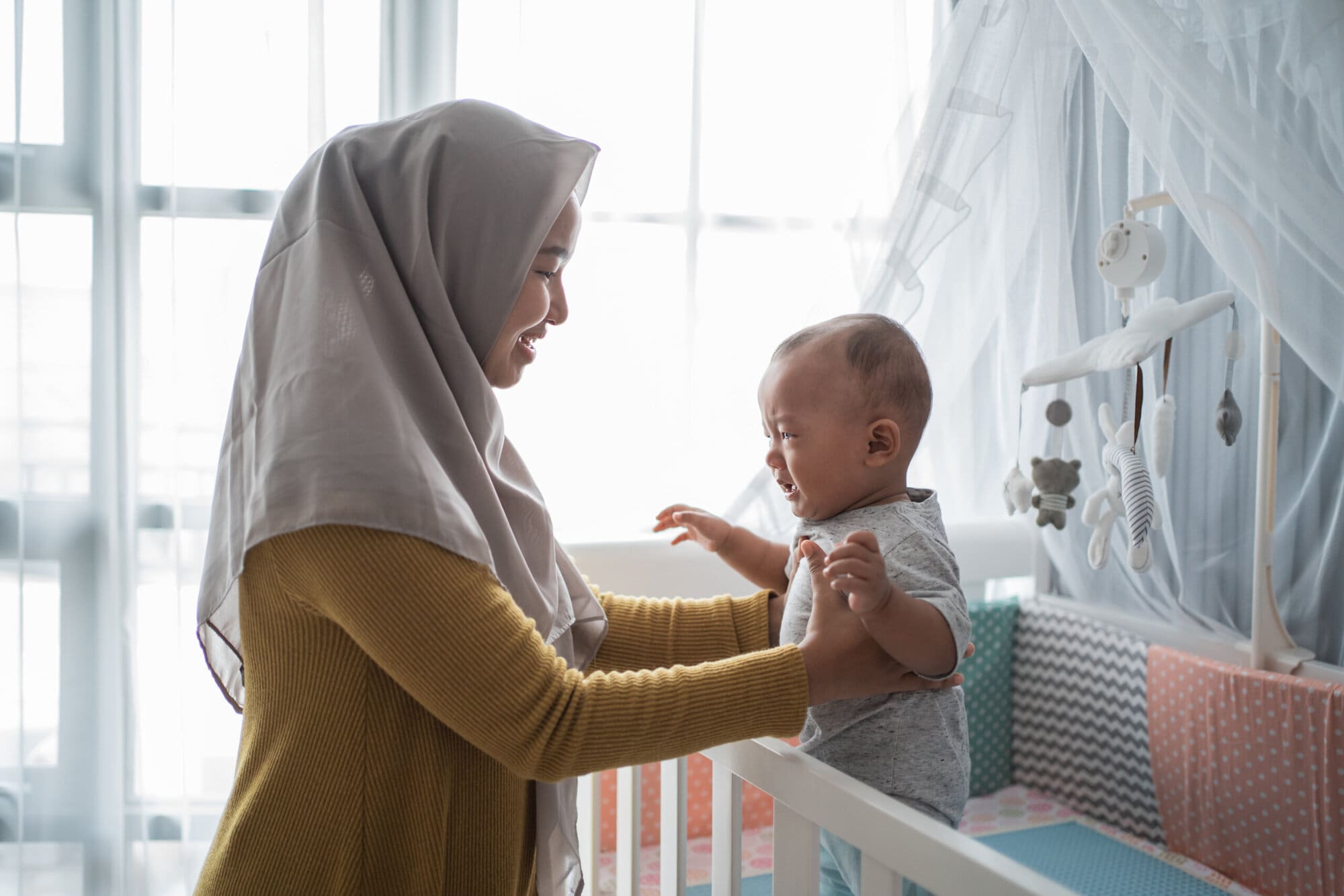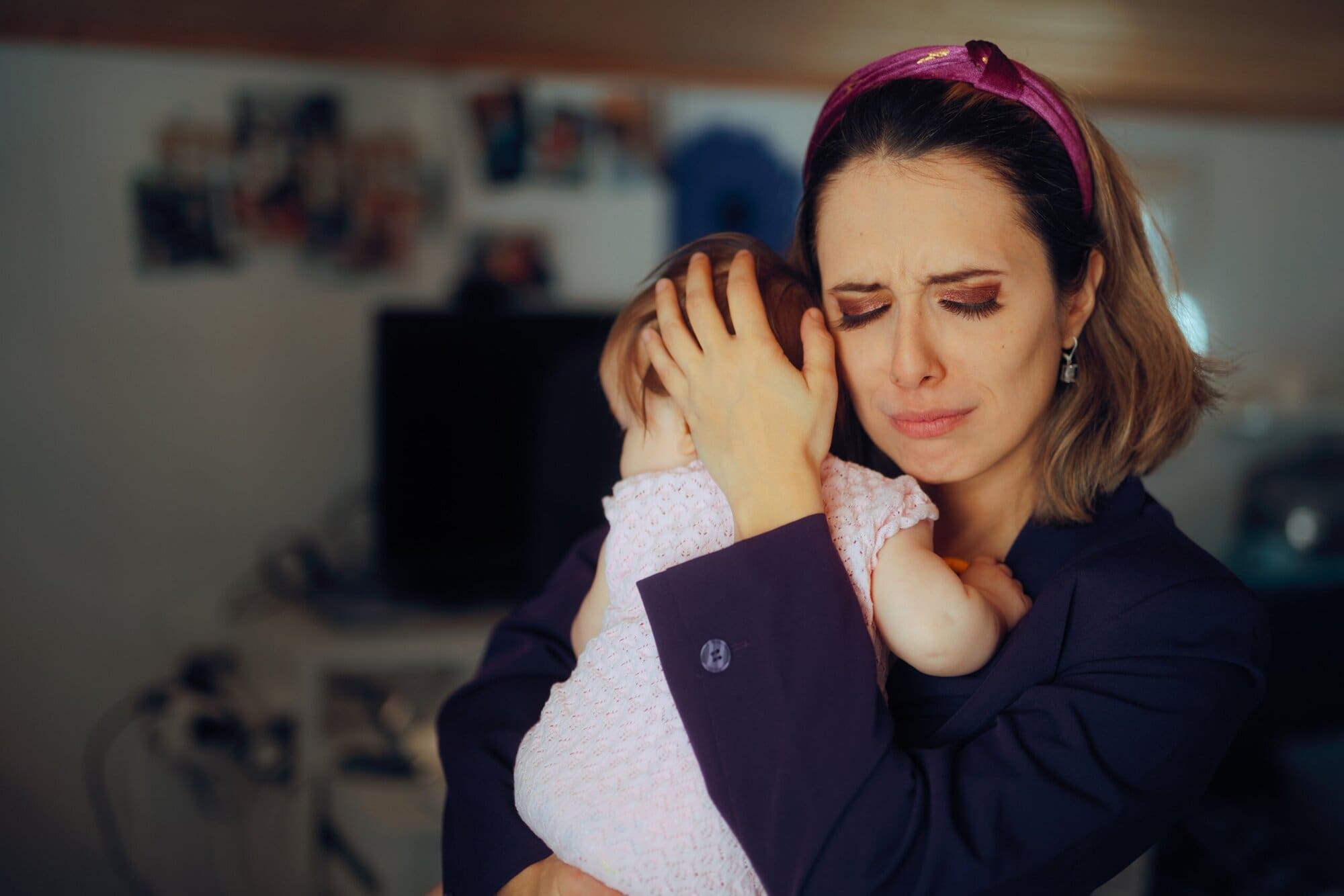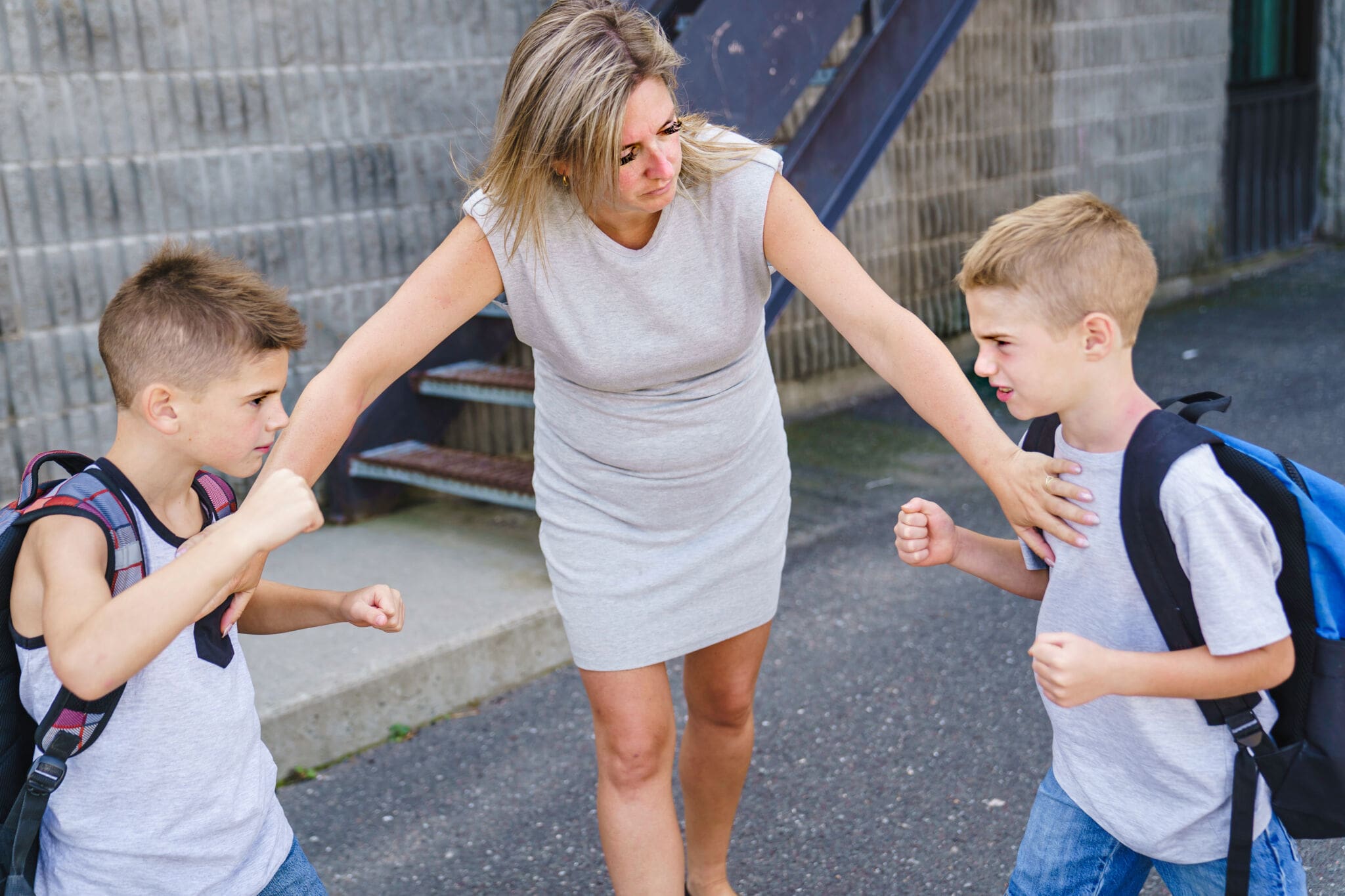In this article
Separation anxiety is a common childhood anxiety problem. Often referred to as SAD (separation anxiety disorder), it is an exaggeration of otherwise developmentally typical behaviours. Instead of a natural level of anxiety, those with separation anxiety disorder have excessive worry, concern or dread about being separated from a specific person.
Developmentally appropriate separate anxiety is common in babies between the ages of 6 months and one year. This is typically observable until children are around 3. Shortly after this, in normal circumstances, it diminishes.
However, for some people, this separation anxiety continues. For others, it can develop or return later on in life. In this article, we’ll explain what separation anxiety is, its causes and management.
What is Separation anxiety?
Anxiety is an uncomfortable emotional state. With separation anxiety, this manifests when the person thinks about or when they are being separated from a specific person to whom they’re attached. It is characterised by dread and inner turmoil. It shows as:
- Nervousness – feeling tense, on edge and ‘jittery.’
- Somatization – the expression of psychological issues in physical symptoms like fatigue, chest pain, joint pain and headaches.
- Pacing – purposeless and unintentional movements.
- Rumination – the habit of overthinking and having negative, repetitive thoughts.
A child with separation anxiety might come across as being clingy. They might have tantrums about being separated. In severe cases, they may refuse to be away from home.
Older children might be able to verbalise that they’re experiencing worries. They might worry about losing a parent to an illness or a disaster. It may be that they’re scared of being kidnapped or lost. They may want to sleep in the same room or bed as their parent long after its deemed typical.
In teens, they may not want to be left home alone even when others their age are happy to do so. There may be nightmares about separation too.

Causes of separation anxiety
Sometimes life events can trigger separation anxiety. If a child has suffered a trauma, this could cause or exacerbate the issue. Any stressful event like parental divorce, moving home, changing schools, or the death of someone close could contribute. Genetics will also play a part.
Here is a list of causes of separation anxiety for different age groups:
Infants and Toddlers:
- Lack of object permanence – they don’t yet understand that a caregiver will return.
- Sudden changes in routine – starting daycare, for example.
- Overattachment to a primary caregiver.
- Stressful events like illness or moving home.
- Parental anxiety – children pick up on stress.
Children and Adolescents
- Transitions – starting school or parental divorce.
- Fear of abandonment or harm to loved ones (could be due to previous trauma).
- Overprotective parenting.
- Bullying.
- Social difficulties.
- Past traumatic experiences (e.g., loss of a loved one or seeing a parent deal with a serious illness or injury).
- Major life changes like a new sibling or relocation.
Adults
- Childhood attachment issues.
- Relationship insecurities (e.g., fear of rejection or abandonment).
- Mental health problems, including anxiety, depression and borderline personality disorder.
- PTSD or past trauma.
- Loss of a close relationship from breakup or divorce.
- Losing a loved one.
- Sudden life changes like a change in job or moving to a new location.
Diagnosis of separation anxiety
In the UK, an official diagnosis of separation anxiety disorder (SAD) starts with an initial GP consultation. The GP will ask the patient, or their representative, about symptoms, their duration, and how they are impacting on daily life. If the symptoms are severe, the GP may make a referral to a specialist. For children, this would be CAMHS (Child and Adolescent Mental Health Service). For adults, it would be an equivalent mental health service in the area.
The diagnosis itself can be issued by a professional in psychology following a psychological assessment. This will either be a clinical psychologist, a child psychiatrist or another mental health specialist. They may use diagnostic tools like:
To be diagnosed, the symptoms must be excessive and inappropriate for the person’s age. In children, they must be present for at least four weeks. For adults, it’s six months.
Common symptoms diagnosticians look for include:
- Intense fear or distress when away from home or loved ones.
- Nightmares about separation.
- Physical symptoms like headaches or stomach-aches.
- Refusal to go to school, work or social events.
- Excessive worry about harm coming to loved ones.
The diagnostician might also use structured questionnaires like the Spence Children’s Anxiety Scale (SCAS) for children or the GAD-7 (Generalised Anxiety Disorder scale) for adults. They may also use parental interviews for children.
Sometimes, it will be important to rule out other conditions. These include generalised anxiety disorder (GAD), social anxiety and autism.
Separation anxiety in babies
In babies, separation anxiety is a normal part of typical development and isn’t always something to be concerned about. Babies (and toddler) often cry or become clinging if their carers leave them. This might even be when popping into another room. Separation anxiety like this, as well as a fear of strangers, is common between the ages of 6 months and up to 3 years of age. Most children grow out of it.
Separation anxiety occurs typically to some degree in all babies. It begins between the ages of 6 months and 8 months and usually peaks between 10 and 18 months. It doesn’t mean that anything has changed in your relationship. Rather, your baby has learnt that they are a dependent being and they realise how much they depend on you.
As they’re increasingly aware of their surroundings, their strong relationships are where they learn to feel safe. It is this strong attachment that upsets them or makes them feel unsafe when you’re not there.
This all coincides with their development of object permanence, i.e., when they start understanding that things, including caregivers, still exist when you can’t see them.
Separation anxiety in babies can be made worse by changes in routine like a new caregiver or starting nursery, parental stress or anxiety and overstimulation or unfamiliar environments.
The signs of separation anxiety in babies
In babies, separation anxiety presents as fussiness, crying or distress when their caregiver leaves. Their behaviour becomes clingier. This is particularly true in unfamiliar settings or new places. They may go from sleeping well alone to waking up more frequently at night. Sleeping alone is more difficult.
Older babies and toddlers will be resistant to being left with other caregivers. This even includes familiar ones. You may also notice changes in mood when they are anticipating separation, like on the familiar drive to nursery or a childminder’s house.
Managing separation in babies
Usually, dealing with babies suffering from separation anxiety is a case of riding it out. The separation anxiety will naturally begin to decrease between the ages of two and three. For some, this depends on other factors. If they have frequent changes in caregiver or they start nursery, it may last longer. Some children experience it more intensely than others due to their temperament too.
To help ease the issue:
- Practice short separations at first. Brief absences will build their confidence that you will return, especially if they remain in their own home for familiarity. Gradually build up longer separations. Work towards leaving them in less familiar settings.
- Establish consistent routines. Predictability helps babies feel secure.
- Reassure the child but don’t prolong the goodbye. A calm and confident exit will reassure them that there’s nothing to fear.
- Use comfort objects. A favourite toy or blanket can provide reassurance. Something of yours might work too. For example, you could ask them to look after your scarf while you’re gone.
- Encourage socialisation. Gradually expose your child to other caregivers. This will ease anxiety over time.
- If your child is old enough to understand, talk to them about what you’ll do later when you pick them up. For example, say, “When I pick you up, we’ll go to the park.”
When to seek help
If your baby or toddler doesn’t seem to be growing out of separation anxiety as expected (around age 3) or if the child struggles to calm down even when you’ve returned, talk to your health visitor.

Separation anxiety in adults
Although separation anxiety is often associated with children, it can also affect adults. Unlike childhood separation anxiety, adult separation anxiety disorder (ASAD) is less common. It can significantly impact daily life and relationships. Naturally, mental well-being is affected.
Causes of separation anxiety in adults
Let’s explore the reasons we gave above in more detail.
Childhood Attachment Issues
The way a person forms emotional bonds in childhood can have a lasting impact on their adult life and how they deal with relationships. John Bowlby was a psychiatrist and psychoanalyst who developed an evolutionary and psychological framework called ‘attachment theory.’ The theory is that infants must form a close relationship with a primary caregiver to ensure they survive and develop healthy emotional and social functions.
Our early interactions with our primary caregivers shape our ability to feel secure, trust and manage emotions in relationships. If a child has an inconsistent, neglectful or overly dependent caregiving experience, they may develop an insecure attachment. This makes it more likely that they’ll experience separation anxiety, even in later life.
Types of attachment and their connection to separation anxiety:
- Anxious attachment: Often caused by inconsistent caregiving. Sometimes needs are met, sometimes they’re ignored. The unpredictability causes hypervigilance in relationships. This can lead to an intense fear of abandonment. People with anxious attachment will often seek constant reassurance. They may become overly dependent on partners, friends or family members. They may ‘check in’ excessively, find it difficult to be alone or worry that a loved one will leave permanently.
- Avoidant attachment: Often caused by emotionally distant caregivers and ones that discourage emotional expression. They learn to suppress their needs. They avoid relying on others to protect themselves from rejection. They may appear to be independent adults but they have a deep-seated anxiety about emotional closeness and separation. They may express their separation anxiety by shutting down instead. And they may avoid building deep connections.
- Disorganised attachment: A child who experiences both fear and comfort from the same caregiver (often due to neglect, trauma or abuse) may have disorganised attachment. These individuals may have a strong desire for closeness but they may also fear abandonment. The relationship dynamic often becomes push-pull.
Relationship Insecurities
Separation anxiety in adults can appear as an extreme emotional dependence on a specific person like a romantic partner, best friend or close family member. This often comes from having relationship insecurities. The person feels uncertain, unworthy or unsafe about their place in the relationship.
These feelings may stem from past experiences of rejection, childhood neglect or inconsistent caregiving. They may have poor self-esteem or fear that they’re ‘not enough.’ These feelings can lead to clinginess, wanting to know about someone’s whereabouts, jealousy, possessiveness and controlling behaviours.
Relationship insecurities may stem from past relationship trauma or betrayal. They may have experienced infidelity, abandonment or emotional neglect.
Mental Health Conditions
Separation anxiety in adults can be caused by underlying mental health conditions like generalised anxiety disorder (GAD), post-traumatic stress disorder (PTSD), depression, personality disorders and panic disorders.
Having one or more of these conditions can contribute to a person’s vulnerability to separation anxiety. This is because these conditions heighten emotional dependence and they make it more difficult for individuals to regulate their emotions in relationships.
PTSD or Trauma
Post-traumatic stress disorder (PTSD) develops after experiencing or witnessing a traumatic event. It is associated with feelings of fear, hypervigilance, panic and emotional instability. This makes separation anxiety more likely.
Those who have experienced loss, neglect or abandonment may develop an intense fear of being alone. Trauma survivors might view separation as a potential danger as they may associate it with past experiences.
The Loss of a Close Relationship
A breakup, divorce or the end of a deep emotional bond in some other way can trigger separation anxiety in adults. The absence of a partner can create intense emotional distress. This can lead to feelings of abandonment, loneliness and a fear of future separations. This is particularly true for someone who had a strong emotional reliance on their partner or for someone who already had attachment insecurities.
The loss creates a void and the person then feels emotionally exposed or unprotected. There may be worry and distress about losing a shared lifestyle, facing the unknown alone or starting over.
Sudden Life Changes
Major life transitions can be overwhelming. Whether it’s moving to a new city or country, starting a new job or changing careers, or entering and leaving a major life stage like having a baby or retiring, these changes often involve separation from familiar people.
Sudden life changes are difficult for anyone but they can be worse for those who are already prone to anxiety. The transitions often involve an adjustment period, but in some cases, the negative reactions to the change persist and lead to long-term separation anxiety.

Separation anxiety in dogs
Separation anxiety is not something unique to humans. It can also occur in dogs. The anxiety can lead to destructive behaviours, excessive barking and vocalisation and other distress signals. It’s natural for dogs to form strong bonds with their owners. But separation anxiety goes beyond normal attachment and it can significantly affect a dog’s wellbeing.
Causes of separation anxiety in dogs
Several factors contribute to the development of separation anxiety in dogs. This includes:
- Sudden changes in routine: Dogs thrive on routine. If a dog’s schedule changes – like an owner going back to work after being at home for months – it can trigger separation anxiety.
- Past trauma or abandonment: Rescue dogs, or dogs who have been rehomed, may develop separation anxiety due to previous neglect or abandonment.
- Lack of early socialisation: Puppies that were not gradually accustomed to being alone may struggle with separation as they grow.
- Change in household: Moving to a new home, the loss of a family member or a new pet joining can make a dog feel insecure.
- Overdependence on owners: Dogs that are constantly by their owner’s side without independent playtime may struggle when left alone.
Treatment and management
Separation anxiety can be a challenging to deal with but, depending on the cause, there are effective treatments and coping strategies:
- Therapy: CBT or attachment-based therapies may help identify unhealthy patterns. A therapist can help individuals process past attachment wounds and develop healthier relationships. Group support or relationship counselling may also help.
- Building self-sufficiency: Encouraging independence through solo activities and self-care.
- Building self-confidence: Developing self-esteem through hobbies, personal achievements and social connections outside of a primary relationship.
- Challenging negative thought patterns: Recognising and reframing anxious thoughts.
- Practising secure attachment behaviours: Learning to set boundaries, foster trust and build self-worth. Avoid excessive dependence on others.
- Exposure therapy: If the separation anxiety is linked to a mental health condition, exposure therapy could help. This gradually increases the person’s comfort with time apart through controlled exposure.
- Medication (if needed): Antidepressants or anti-anxiety medication may help individuals manage severe symptoms.
- Mindfulness and relaxation techniques: Techniques like deep breathing, mediation and grounding exercises can help a person regulate their emotions.
- Acknowledging the emotional impact of life transitions: If there’s a big life change, it’s important to recognise that fear and distress are natural. This helps to reduce shame and self-judgement.
For dogs, a different approach is needed. Strategies to manage separation anxiety in dogs include gradual desensitisation, creating a safe space, ensuring exercise and mental stimulation, practising calm departures and arrivals and using enrichment toys like puzzle toys. In severe cases, calming sprays or veterinary-prescribed medication may be beneficial.






